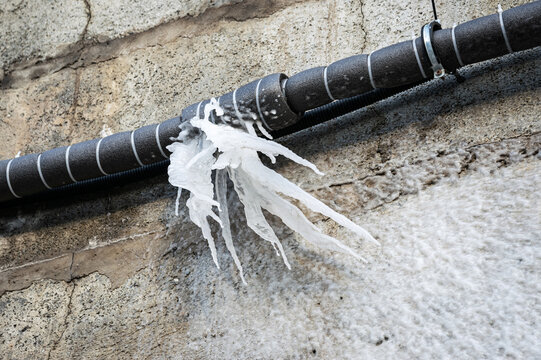Tips to Defend Plumbing System from Freezing: Critical Advice
Tips to Defend Plumbing System from Freezing: Critical Advice
Blog Article
We've discovered this post pertaining to 6 Ways to Prevent Frozen Pipes down the page on the net and decided it made perfect sense to discuss it with you on this page.

Cold weather can damage your pipes, particularly by freezing pipelines. Below's just how to avoid it from happening and what to do if it does.
Introduction
As temperatures drop, the risk of icy pipelines boosts, potentially resulting in costly repairs and water damages. Recognizing exactly how to prevent icy pipes is essential for homeowners in chilly climates.
Avoidance Tips
Insulating susceptible pipelines
Wrap pipelines in insulation sleeves or use warm tape to protect them from freezing temperature levels. Concentrate on pipes in unheated or outside locations of the home.
Heating techniques
Keep indoor rooms sufficiently warmed, especially areas with plumbing. Open up cupboard doors to enable cozy air to flow around pipelines under sinks.
Just how to recognize icy pipelines
Try to find reduced water flow from faucets, uncommon smells or noises from pipes, and visible frost on exposed pipelines.
Long-Term Solutions
Architectural modifications
Consider rerouting pipelines far from exterior wall surfaces or unheated areas. Add added insulation to attics, cellars, and crawl spaces.
Updating insulation
Purchase premium insulation for pipes, attic rooms, and walls. Appropriate insulation assists keep regular temperatures and lowers the danger of frozen pipes.
Safeguarding Outdoor Pipes
Yard tubes and outdoor taps
Detach and drain yard tubes prior to winter season. Set up frost-proof faucets or cover outdoor faucets with insulated caps.
Recognizing Frozen Pipes
What creates pipes to freeze?
Pipelines ice up when exposed to temperature levels listed below 32 ° F (0 ° C) for extended periods. As water inside the pipes ices up, it expands, putting pressure on the pipeline wall surfaces and possibly creating them to burst.
Risks and damages
Frozen pipes can cause water interruptions, property damage, and pricey repairs. Ruptured pipelines can flooding homes and trigger comprehensive structural damage.
Indicators of Frozen Piping
Identifying icy pipelines early can avoid them from bursting.
What to Do If Your Pipelines Freeze
Immediate activities to take
If you think icy pipelines, keep taps available to soothe stress as the ice melts. Utilize a hairdryer or towels soaked in warm water to thaw pipelines slowly.
Verdict
Avoiding icy pipes calls for proactive steps and fast reactions. By comprehending the reasons, signs, and safety nets, house owners can safeguard their pipes during cold weather.
5 Ways to Prevent Frozen Pipes
Drain Outdoor Faucets and Disconnect Hoses
First, close the shut-off valve that controls the flow of water in the pipe to your outdoor faucet. Then, head outside to disconnect and drain your hose and open the outdoor faucet to allow the water to completely drain out of the line. Turn off the faucet when done. Finally, head back to the shut-off valve and drain the remaining water inside the pipe into a bucket or container. Additionally, if you have a home irrigation system, you should consider hiring an expert to clear the system of water each year.
Insulate Pipes
One of the best and most cost-effective methods for preventing frozen water pipes is to wrap your pipes with insulation. This is especially important for areas in your home that aren’t exposed to heat, such as an attic. We suggest using foam sleeves, which can typically be found at your local hardware store.
Keep Heat Running at 65
Your pipes are located inside your walls, and the temperature there is much colder than the rest of the house. To prevent your pipes from freezing, The Insurance Information Institute suggests that you keep your home heated to at least 65 degrees, even when traveling. You may want to invest in smart devices that can keep an eye on the temperature in your home while you’re away.
Leave Water Dripping
Moving water — even a small trickle — can prevent ice from forming inside your pipes. When freezing temps are imminent, start a drip of water from all faucets that serve exposed pipes. Leaving a few faucets running will also help relieve pressure inside the pipes and help prevent a rupture if the water inside freezes.
Open Cupboard Doors
Warm your kitchen and bathroom pipes by opening cupboards and vanities. You should also leave your interior doors ajar to help warm air circulate evenly throughout your home.

As an enthusiastic person who reads about Helpful Tips to Prevent Frozen Pipes this Winter, I imagined sharing that piece of writing was worth the trouble. Make sure you pause to share this blog post if you enjoyed reading it. Thank-you for taking the time to read it.
Call Today Report this page